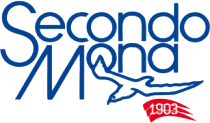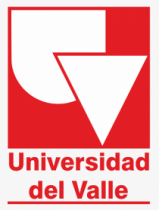Global Activated Alumina Market: Industry Trends, Share, Size, Growth & Opportunities - ResearchAndMarkets.com
The "Activated Alumina Market: Global Industry Trends, Share, Size, Growth, Opportunity and Forecast 2020-2025" report has been added to ResearchAndMarkets.com's offering.
The global activated alumina market is currently witnessing a healthy growth. Activated alumina refers to the dry and granular form of aluminum oxide. It is highly porous and bonds with liquids and gases without altering its chemical or physical form. It is formed by dihydroxylation of aluminum hydroxide and is commonly used as a desiccant in water treatment processes and as a catalyst in natural gas and refining operations. It also exhibits resistance to abrasion and thermal shocks and does not shrink, swell or disintegrate upon immersion in water. It can also sustain extreme conditions, such as high temperature and acidic or alkaline environments, owing to which it finds extensive applications across various industries and sectors, including oil and gas, water treatment, healthcare and plastics.
The market is primarily being driven by the growing demand for water treatment solutions across the globe. Activated alumina is extensively used for the development of reverse osmosis (RO) membrane technology that is utilized in the purification of drinking water. Furthermore, widespread product adoption for purifying lithium, which is used in glass, ceramics, lubricating greases, batteries and air treatment, is providing a boost to the market growth. Additionally, the thriving healthcare industry is also creating a positive outlook for the market. Activated alumina bio-ceramics are used as an alternative to metal alloys in the manufacturing of surgical and dental implants. They exhibit anti-corrosion properties, along with low friction and high durability. Other factors, including growing product utilization in refinery projects and extensive research and development (R&D) activities, are projected to drive the market further. Looking forward, the publisher expects the market to register a CAGR of around 6% during 2020-2025.
Key Questions Answered in This Report:
- How has the global activated alumina market performed so far and how will it perform in the coming years?
- What are the key regional markets?
- What is the breakup of the market based on the application?
- What is the breakup of the market based on the end-use industry?
- What is the breakup of the market based on the form?
- What is the breakup of the market based on the mesh size?
- What are the various stages in the value chain of the market?
- What are the key driving factors and challenges in the market?
- What is the structure of the global activated alumina industry and who are the key players?
- What is the degree of competition in the market?
Key Topics Covered:
1 Preface
2 Scope and Methodology
2.1 Objectives of the Study
2.2 Stakeholders
2.3 Data Sources
2.3.1 Primary Sources
2.3.2 Secondary Sources
2.4 Market Estimation
2.4.1 Bottom-Up Approach
2.4.2 Top-Down Approach
2.5 Forecasting Methodology
3 Executive Summary
4 Introduction
4.1 Overview
4.2 Key Industry Trends
5 Global Activated Alumina Market
5.1 Market Overview
5.2 Market Performance
5.3 Market Forecast
6 Market Breakup by Application
6.1 Catalyst
6.2 Desiccant
6.3 Absorbent
6.4 Others
7 Market Breakup by End-Use Industry
7.1 Water Treatment
7.2 Pharmaceutical
7.3 Textile
7.4 Oil & Gas
7.5 Chemical
7.6 Others
8 Market Breakup by Form
8.1 Powder
8.2 Beads
9 Market Breakup by Mesh Size
9.1 80-150 Mesh
9.1.1 Market Trends
9.1.2 Market Forecast
9.2 150-300 Mesh
9.2.1 Market Trends
9.2.2 Market Forecast
9.3 Above 300 Mesh
9.3.1 Market Trends
9.3.2 Market Forecast
10 Market Breakup by Region
10.1 North America
10.2 Asia Pacific
10.3 Europe
10.4 Latin America
10.5 Middle East and Africa
11 SWOT Analysis
11.1 Overview
11.2 Strengths
11.3 Weaknesses
11.4 Opportunities
11.5 Threats
12 Value Chain Analysis
12.1 Overview
12.2 Inbound Logistics
12.3 Operations
12.4 Outbound Logistics
12.5 Marketing and Sales
12.6 End-User
13 Porters Five Forces Analysis
13.1 Overview
13.2 Bargaining Power of Buyers
13.3 Bargaining Power of Suppliers
13.4 Degree of Competition
13.5 Threat of New Entrants
13.6 Threat of Substitutes
14 Price Indicators
14.1 Key Price Indicators
14.2 Price Structure
14.3 Price Trends
15 Competitive Landscape
15.1 Market Structure
15.2 Key Players
15.3 Profiles of Key Players
15.3.1 AGC Chemicals Pvt. Ltd.
15.3.2 Axens
15.3.3 BASF SE
15.3.4 Dynamic Adsorbents Inc.
15.3.5 Honeywell International Inc.
15.3.6 Huber Engineered Materials
15.3.7 Jiangxi sanxin Hi-Tech Ceramics Co., Ltd
15.3.8 Porocel Industries
15.3.9 Shandong Zhongxin New Material Technology Co., Ltd.
15.3.10 Sialca Industries
15.3.11 Sorbead India
15.3.12 Sumitomo Chemical Co.
For more information about this report visit https://www.researchandmarkets.com/r/u5jisc
View source version on businesswire.com: https://www.businesswire.com/news/home/20200508005359/en/




